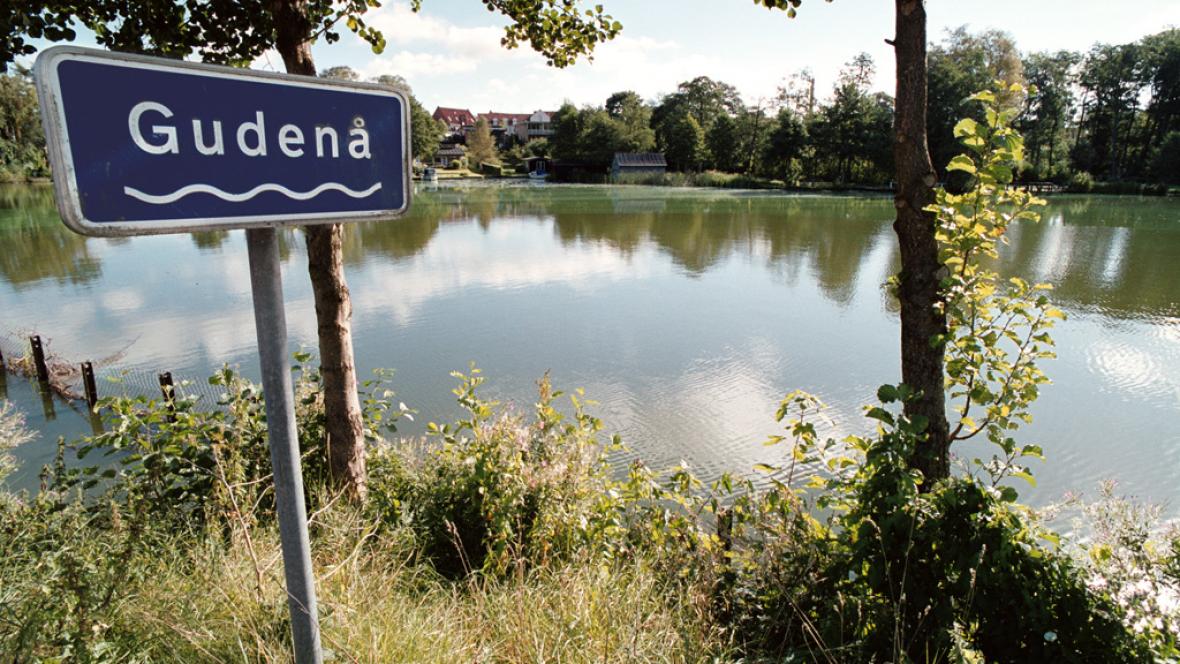The Gudenå Committee

Welcome to the homepage for the Gudenå Committee! Here you will find information about the cross-municipal cooperation around the longest river in Denmark – the Gudenå. The Committee’s focus is the enjoyment and protection of the Gudenå as well as climate adaptation.
Who we are – the Gudenå Committee
The Gudenå Committee is a collaboration between municipalities in the Gudenå and Randers Fjord river catchment. The Committee is made up of one municipal board member from each municipality. Silkeborg Municipality currently hosts the chairmanship for the Committee.
The following political members make up the Gudenå Committee in 2022-2025:
Randers Kommune: Karen Lagoni (Socialdemokratiet)
Viborg Kommune: Steffen Drejer (Konservative)
Favrskov Kommune: Erling Kvist Andersen (Socialdemokratiet)
Silkeborg Kommune: Rune Kristensen (Socialdemokratiet)
Skanderborg Kommune: Jens Szabo (Venstre)
Horsens Kommune: Lisbeth Torfing (Enhedslisten)
Hedensted Kommune: Jeppe Mouritsen (Venstre)
Norddjurs Kommune: Aleksander Myrhøj (Socialistisk Folkeparti)
The History of the Gudenå Committee
The Gudenå Committee began as the "Gudenå Udvalg", established by the municipalities in the 1970s after the so-called “Gudenå Study”, which researched the pollution levels of the Gudenå between 1973 and 1975. In the 1980s, the "Gudenå Udvalg" became the Gudenå Committee, and after the municipal reform in 2007 the Committee was reorganized to its current form as a fornalised cross-municipal cooperative.
There are at present eight municipalities in the Gudenå Committee: Favrskov, Hedensted, Horsens, Norddjurs, Randers, Silkeborg, Skanderborg, and Viborg Municipality.
A more in-depth account of the Gudenå Committee can be found in the book “The Gudenå’s Cultural History” by Erik Hoffmeister.
The Gudenå Committee’s work and economy
The Gudenå Committee holds an average of 4 meetings per year. The meetings are closed, but both the agenda and the minutes are public and are available on the website (Danish only).
The Committee is financed through funding from each of the municipalities. Municipal contributions are proportional to the percentage of the area of the catchment area that runs through each of the municipalities.
The Committee’s regulations accounts are public and available on the website.
The Gudenå Committee’s purpose and areas of responsibility
The Gudenå Committee’s purpose is described in the Committee Constitution, which like the regulations can be found on the Committee website.
The Gudenå Committee is an advisory body to the municipalities in the Gudenå River catchment area and Randers Fjord on the use and environmental protection of the Gudenå. As such, it regulates non-industrial navigation on the river, and the recreational interests across the participating communities.
The Gudenå Committee is a cross-municipal collaboration to solve communal environmental problems and to establish administrative relations with regards to the Gudenå. It also serves as a centrally coordinated managing body of navigational regulations and permits for canoe and kayak navigation on the Gudenå and its lakes. In this capacity, the Gudenå Committee is involved to varying degrees in the following tasks: the Catchmment Area Steering Committee (Vandoplandsstyregruppe, VOS), the GudenåSamarbejdet (a cooperative body that includes municipalities as well as tourist organisations and other stakeholders), as well as the Advisory Board for the Navigation of the Gudenå (Brugerrådet for Sejlads på Gudenåen. More information about these responsibilities can be found on the website.
The Advisory Board for the Navigation of the Gudenå is an advisory body created in response to Decision nr. 148 of 24-02-2016 on non-industrial navigation on the Gudenå. The Board coordinates the recreational navigation on the Gudenå, and advises the authorities in the Gudenå municipalities on navigation matters.
The Advisory Board for Navigation of the Gudenå is administrated by the Gudenå Committee’s Secretariat and the manager for the Gudenå Committee’s secretariat is the acting chair of the Advisory Board. There are on average two meetings per year attended by the representatives from the municipalities in the Gudenå Committee as well as relevant private and public stakeholders.
The Gudenå Committee is informed of the recommendations from the Advisory Board at Committee meetings.